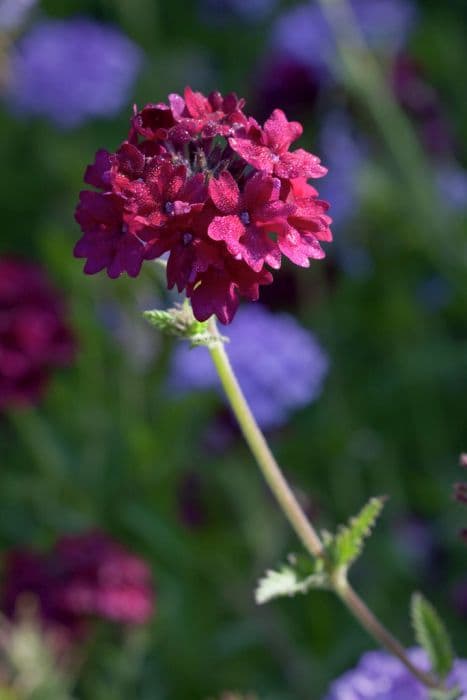Lavender Grace Verbena Glandularia Donalena Lavender Grace (Donalena Series)
![vervain [Donalena Lavender Grace]](/_next/image?url=https%3A%2F%2Fplants-admin.emdemapps.com%2Fimages%2Fplants%2F%2Fimages%2F604b575c837e7.png&w=3840&q=75)
ABOUT
The Glandularia Donalena Lavender Grace, commonly known as Lavender Grace Verbena, is a vibrant and ornamental plant renowned for its stunning flower display. The most captivating feature of this plant is its profusion of lavender-hued blossoms that form tight, globe-like clusters atop its foliage. Each delicate flower within the clusters exhibits a classic verbena shape, comprised of five petals that splay outwards to reveal a slightly ruffled edge that contributes to its overall graceful demeanor. The blooms emanate a captivating fragrance that lures both humans and pollinators alike, making this plant an excellent choice for gardens aiming to promote biodiversity. Not only are the flowers attractive, but the foliage also adds to the aesthetic appeal of the Lavender Grace Verbena. The leaves are petite and of a deep green hue, forming a dense, mat-like ground cover that offers a lush background for the radiant flowers. Throughout the blooming period, this perennial plant showcases its flowers persistently, creating a long-lasting display that enhances any setting. Its elegant appearance makes it a popular choice for borders, beds, and containers where its floral show can be admired. The Lavender Grace Verbena's ability to provide a constant pop of color without mention of its dimensions is a testament to its versatility and charm in a variety of garden spaces and landscaping designs.
About this plant
 Names
NamesFamily
Verbenaceae.
Synonyms
Lavender Grace Vervain, Lavender Grace Verbena.
Common names
Glandularia Donalena Lavender Grace (Donalena Series).
 Toxicity
ToxicityTo humans
The common name for Glandularia Donalena Lavender Grace from the Donalena Series is simply 'Glandularia'. As of my last update, there is no specific information available that indicates Glandularia is toxic to humans. However, it is generally advisable to avoid ingesting plants that are not known to be edible, as they may cause adverse reactions or be toxic. In the absence of specific toxicity information, caution should be exercised and if ingestion occurs and leads to any adverse symptoms, medical attention should be sought.
To pets
The common name for Glandularia Donalena Lavender Grace from the Donalena Series is 'Glandularia'. There is no widely recognized documentation of toxicity of Glandularia to pets such as dogs and cats. As with humans, it's typically recommended not to let pets consume plants not meant for their consumption. Should a pet ingest Glandularia and exhibit symptoms of distress such as vomiting, diarrhea, or unusual behavior, it would be prudent to consult a veterinarian.
 Characteristics
CharacteristicsLife cycle
Perennials
Foliage type
Semi-deciduous
Color of leaves
Green
Flower color
Lavender
Height
1 foot (0.3 meters)
Spread
2 feet (0.6 meters)
Plant type
Herb
Hardiness zones
Varies
Native area
America
Benefits
 General Benefits
General Benefits- Attracts Pollinators: The flowers of Lavender Grace provide nectar that attracts butterflies, bees, and other beneficial pollinators to the garden.
- Drought Tolerance: Once established, this plant has a high tolerance to drought, reducing the need for frequent watering and making it suitable for xeriscaping.
- Low Maintenance: Lavender Grace requires minimal upkeep, making it an ideal choice for both novice and experienced gardeners.
- Decorative Appeal: With its vibrant purple flowers and lush foliage, it adds a splash of color and aesthetic appeal to gardens, borders, and containers.
- Rapid Growth: This plant grows relatively quickly, allowing gardeners to enjoy its visual impact soon after planting.
- Heat Resistance: It can withstand high temperatures, making it suitable for hot climates where other plants might struggle.
- Continuous Blooming: Lavender Grace often has a long blooming period, providing a consistent display of flowers throughout the growing season.
- Enhances Garden Diversity: Introducing Lavender Grace can contribute to biodiversity by supporting a variety of insects and providing habitat within the garden.
- Soil Adaptability: It can adapt to a range of soil types, though it prefers well-drained conditions, which makes it versatile for various garden settings.
- Compact Growth: With a compact growth habit, it works well in small garden spaces or as a border plant without overtaking surrounding plants.
 Medical Properties
Medical PropertiesThe Lavender Grace plant does not have recognized medical uses.
 Air-purifying Qualities
Air-purifying QualitiesThis plant is not specifically known for air purifying qualities.
 Other Uses
Other Uses- Crafting Natural Dyes: The vibrant flowers of Lavender Grace can be used to create natural dyes for fabrics or arts and craft projects.
- Garden Themed Art Projects: Press the flowers to create beautiful natural elements in scrapbooking, card making, or other garden-themed art projects.
- Companion Planting: Lavender Grace can be planted alongside vegetables and herbs in the garden to create a visually appealing and biodiversity-friendly environment.
- Photography Subject: Photographers may use this attractive plant as a subject for garden photography, capturing its color and form.
- Educational Tool: This plant can be used in educational settings to teach about pollination and the lifecycle of plants.
- Floral Arrangements: Fresh or dried, the flowers can be used in floral arrangements to add a splash of color and a subtle aroma.
- Garden Borders: Its compact form makes it suitable for creating colorful and fragrant borders in garden paths.
- Attracting Wildlife: Lavender Grace can be used to attract butterflies and hummingbirds, enhancing the ecological value of a garden.
- Scented Sachets: Dried Lavender Grace flowers can be used to make scented sachets for wardrobes or drawers.
- Theme Gardens: Incorporate Lavender Grace in theme gardens, such as a purple color-themed garden or a sensory garden, for visual and olfactory interest.
Interesting Facts
 Feng Shui
Feng ShuiThe plant Lavender is not used in Feng Shui practice.
 Zodiac Sign Compitability
Zodiac Sign CompitabilityThe plant Lavender is not used in astrology practice.
 Plant Symbolism
Plant Symbolism- Lavender: Symbolizes purity, silence, devotion serenity, grace and calmness. In part due to its aromatic fragrance, it's associated with relaxation and peace.
- Grace: Often tied to the elegance and dignity of the plant's appearance and movement, embodying the qualities of refinement and smoothness.
- Healing: Lavender is also known for its medicinal properties and is commonly associated with healing, both of the mind and body.
- Love: Its use in love spells and potions has historically linked lavender to affection, romantic love, and desire.
- Protection: Due to its use in warding off evil spirits and negative energies, lavender represents protection and safeguarding.
 Water
WaterFor the Veronica 'Lavender Grace' from the Donalena Series, water the plant deeply once a week, ensuring you deliver about 1 gallon of water to the root zone. During the hotter, drier months, it may be necessary to increase watering frequency to twice per week, especially if the plant is in well-draining soil and full sun. Reduce the watering to once every two weeks during cooler months when the plant is not actively growing. Always check the top inch of soil for dryness before watering; if it feels dry to the touch, it's time to water.
 Light
LightVeronica 'Lavender Grace' thrives in full sun, which means it requires at least 6 to 8 hours of direct sunlight daily. The best spot for this plant is in an area where it can receive unfiltered sunlight throughout the day. Avoid placing it in deep shade or excessively dark locations, as this will diminish flowering and potentially lead to poor plant health.
 Temperature
TemperatureVeronica 'Lavender Grace' is hardy and prefers a temperature range between 60°F and 85°F for optimal growth. It can tolerate a minimum temperature down to 20°F and a maximum up to 90°F. However, consistent temperatures within its preferred range will promote the best flowering and plant vigor.
 Pruning
PruningPruning Veronica 'Lavender Grace' encourages fresh growth and more prolific blooming. Prune or deadhead spent flowers regularly during the blooming season to maintain a tidy appearance and to stimulate new blooms. A more substantial pruning can be done in late winter or early spring before new growth begins, cutting back the foliage to a few inches above the ground to rejuvenate the plant.
 Cleaning
CleaningAs needed
 Soil
SoilLavender Grace prefers a soil mix that is well-draining, such as a combination of potting soil, peat moss, and perlite or sand to ensure good aeration. This plant thrives best in slightly acidic to neutral soil with a pH ranging from 6.0 to 7.0.
 Repotting
RepottingLavender Grace should be repotted every 1-2 years during spring or early summer to refresh the soil and accommodate root growth. Repotting too frequently is not necessary and can stress the plant.
 Humidity & Misting
Humidity & MistingLavender Grace thrives in moderate humidity levels but is fairly adaptable. It prefers humidity around 40-50% but can tolerate a range from slightly lower to slightly higher without significant issues.
 Suitable locations
Suitable locationsIndoor
Place Lavender Grace in a bright spot, avoiding direct harsh light.
Outdoor
Plant in full sun to partial shade; protect from strong winds.
Hardiness zone
7-11 USDA
 Life cycle
Life cycleLavender Grace Glandularia, a perennial in warm climates and annual elsewhere, starts as a seed that germinates in soil with adequate warmth and moisture. Emerging as a seedling, it develops roots and shoots with initial leaves to harness sunlight and nutrients. The vegetative stage follows, with the plant growing rapidly and producing more leaves and stems. As it matures, it enters the flowering stage, with vibrant lavender-colored blossoms attracting pollinators and aiding in reproduction. If conditions allow, the plant sets seeds that are dispersed by wind, animals, or human intervention. Eventually, Lavender Grace Glandularia completes its life cycle when it dies after seeding, or it may persist and enter dormancy in colder climates to regrow the following season.
 Propogation
PropogationPropogation time
Spring-Early Summer
Propogation: The most popular method for propagating Glandularia Donalena Lavender Grace, commonly known as Lavender Grace Verbena, is through stem cuttings. Typically, the best time to take cuttings is during spring or early summer when the plant is actively growing. Choose healthy, non-flowering stems and cut a 4 to 6 inch (approximately 10 to 15 cm) length, making sure to include several leaf nodes. Strip the leaves from the lower half of the cutting and dip the cut end into a rooting hormone powder to encourage root development. Plant the cuttings in a moistened potting mix, placing them in a bright, indirect light area. The medium should be kept consistently moist but not soggy. Roots usually form within a few weeks, after which you can gradually harden off the plants before transplanting them into the garden.
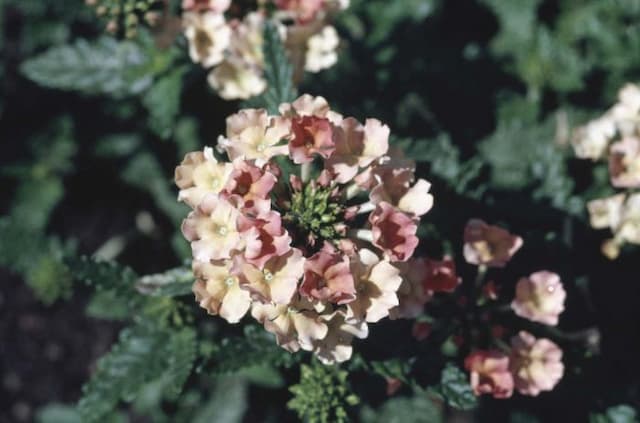


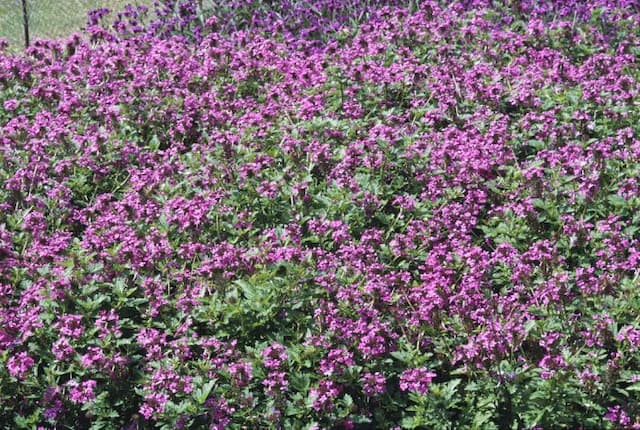
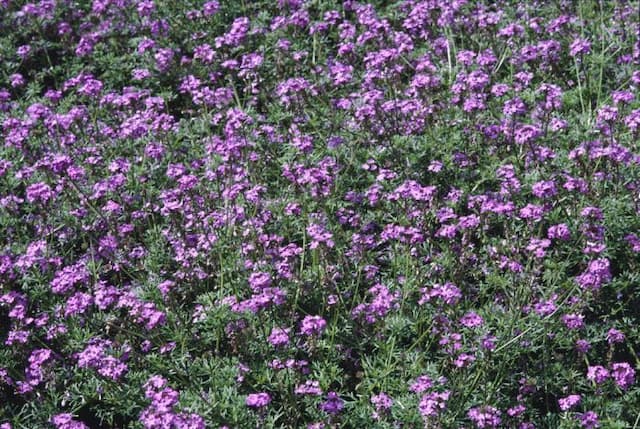
![Vervain [Endurascape Pink Bicolor]](/_next/image?url=https%3A%2F%2Fplants-admin.emdemapps.com%2Fimages%2Fplants%2F%2Fimages%2F604b594e749b0.png&w=640&q=75)
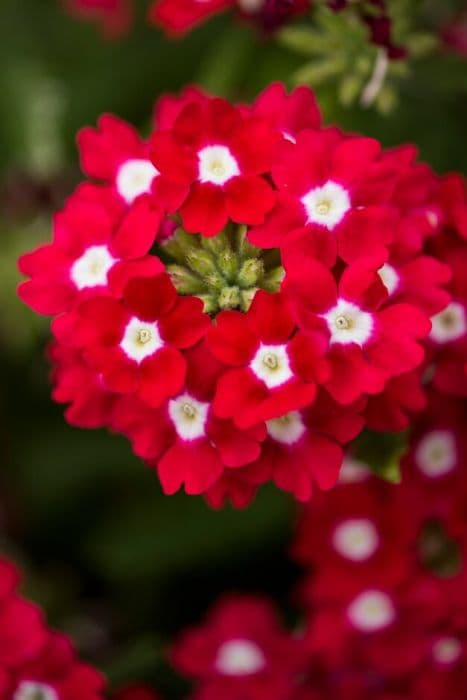
![Vervain [Seabrook's Lavender]](/_next/image?url=https%3A%2F%2Fplants-admin.emdemapps.com%2Fimages%2Fplants%2F%2Fimages%2F604b650ea9729.png&w=640&q=75)

